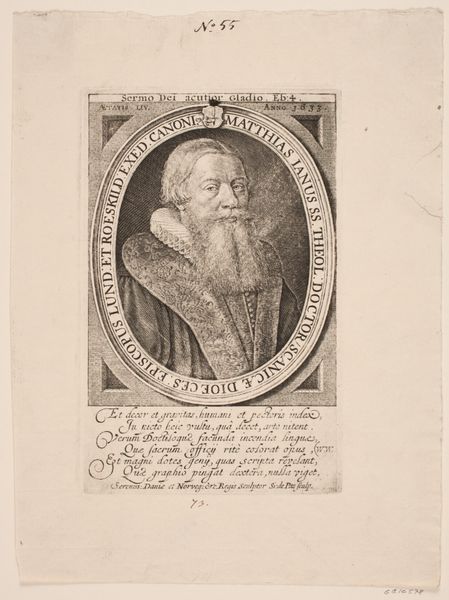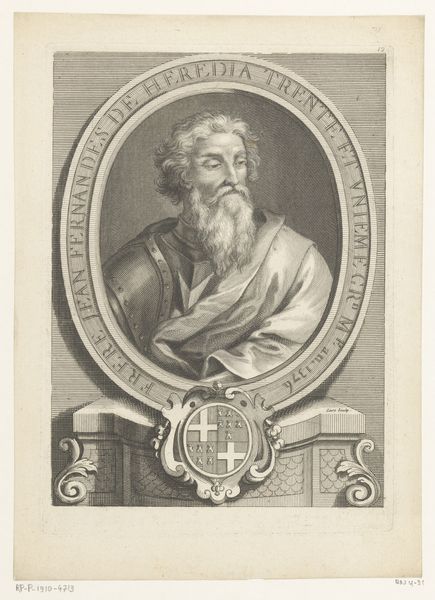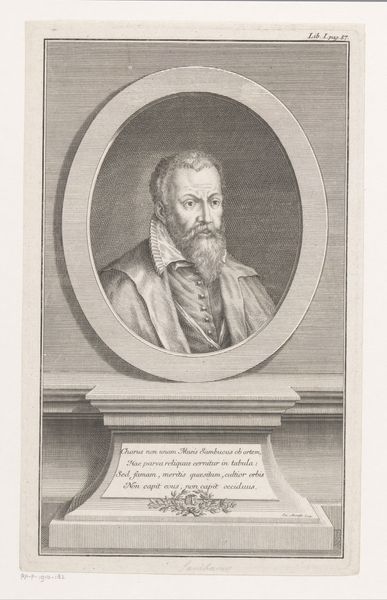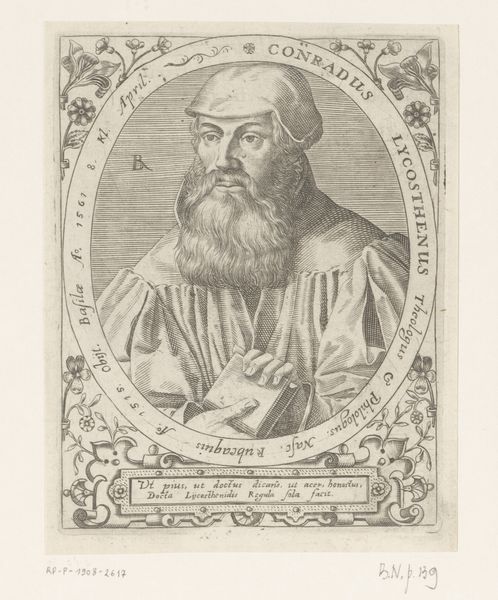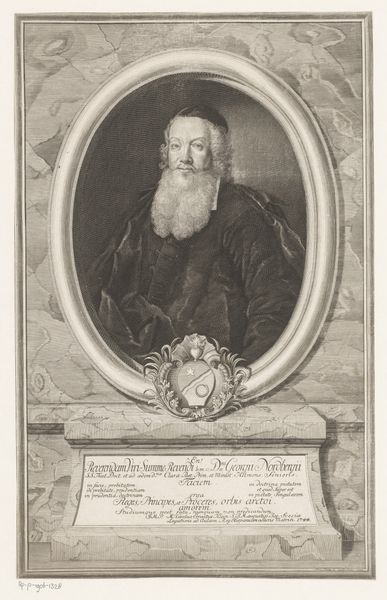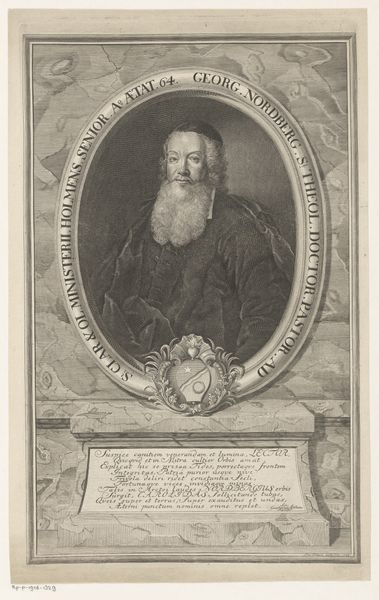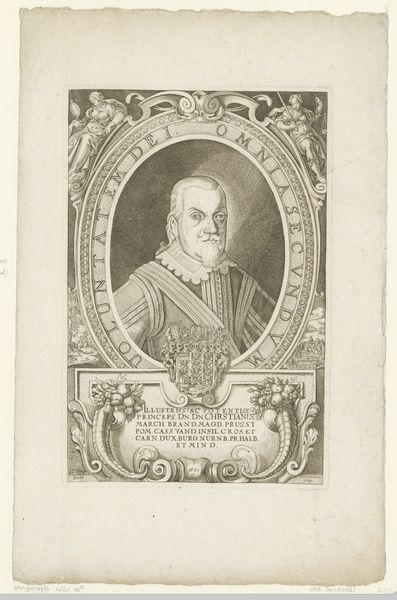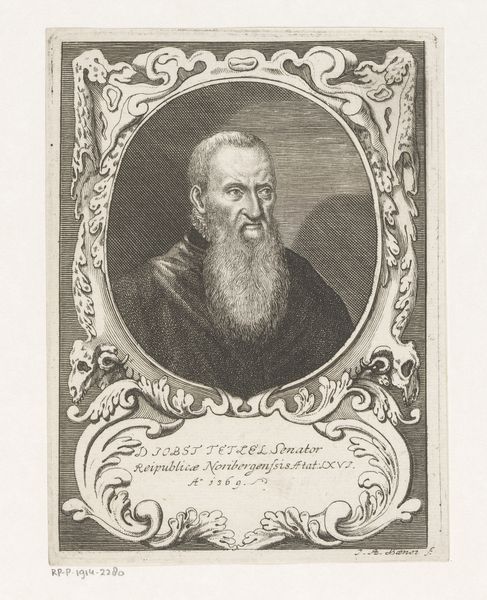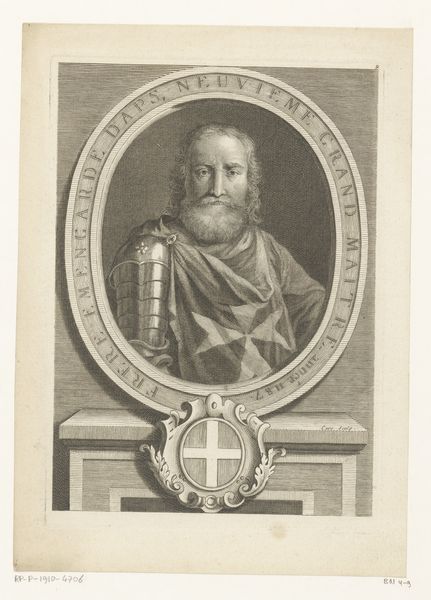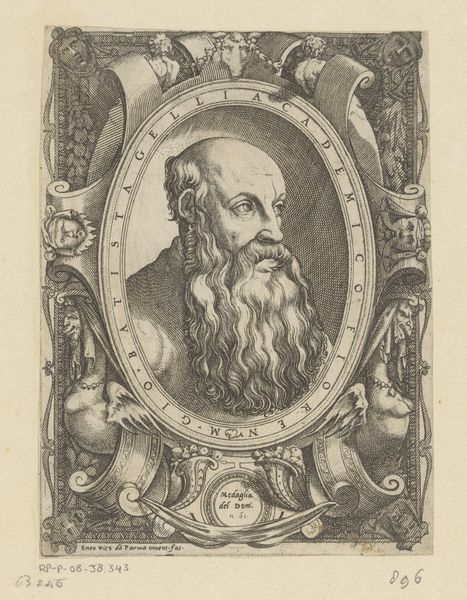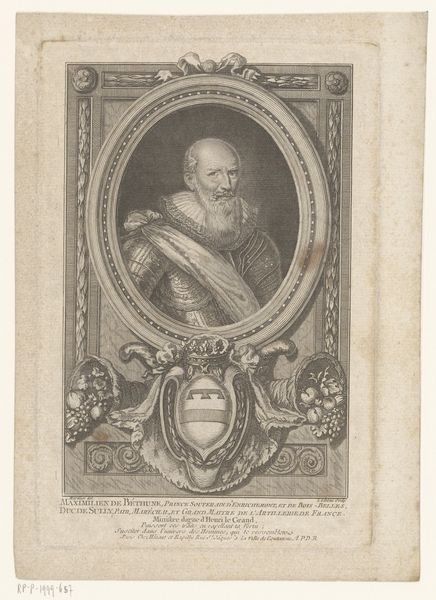
print, engraving
#
portrait
#
baroque
# print
#
engraving
Dimensions: height 215 mm, width 154 mm
Copyright: Rijks Museum: Open Domain
Curator: Let's turn our attention to this fascinating portrait. It's an engraving of Piero Raimondo Zacosta, dating back to 1726, by Laurent Cars. Editor: My first impression is one of noble restraint. Despite the armor and the elaborate framing, there's a solemn dignity in his gaze. Curator: Indeed. The Baroque style is evident, but it's tempered. We see Zacosta, presumably an important figure, presented within this oval frame, inscription encircling him, then positioned atop a plinth embellished with a coat of arms. All these elements function to elevate him, quite literally, as a person of status. Editor: The armor, though, is what draws me in. Notice the Maltese cross emblazoned on the chest. It immediately suggests membership in the Knights Hospitaller, evoking ideas of duty and religious order. It makes me think of Crusader imagery. Curator: Absolutely. Consider the historical context: by 1726, the era of knights was largely in the past. Therefore, the portrait emphasizes ancestry, lineage, or his involvement in the institutional legacies of such organizations. It's a deliberate invoking of the past. The choice to display him in armour has very specific social significance here. Editor: And I love the details, even in this engraved medium. The texture of the beard against the polished metal, those tiny highlights in his eye… Cars successfully communicated so much symbolic information through Zacosta's persona. His stern expression is what captures you. Curator: Which connects the portrait, like much Baroque portraiture, to notions of power and status through an idealized lens, emphasizing particular ideologies about authority at the time of the Order. And you're right, Cars manages to convey this with precision, despite working within the limits of the engraving medium. This portrait offers a window into how these figures sought to define themselves and their relationship to established powers. Editor: It's incredible how visual symbols persist through history, shaping our understanding even today. Thanks to Laurent Cars we can study his legacy in this print. Curator: Exactly. Considering art, we always reflect on who is given power in society through these lasting images and through those images we may reconsider how such individuals sought to exercise control through symbols and traditions.
Comments
No comments
Be the first to comment and join the conversation on the ultimate creative platform.
